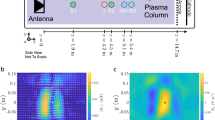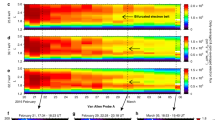Abstract
DURING the period autumn 1949 – spring 1950, a series of measurements of field-strength from a very-high-frequency airborne transmitter was made at the Royal Aircraft Establishment. The main purpose of the investigations was to examine the field-strengths obtained in varying weather conditions with one end of the propagation path at a height of 40,000 ft. above the earth (the other end being at a height of 90 ft.) and to compare them with the field-strengths calculated from conventional ray-theory for a smooth spherical earth for both ordinary and four-thirds earth radius. For this purpose the two frequencies 280.2 and 386.6 Mc./s. were chosen.
This is a preview of subscription content, access via your institution
Access options
Subscribe to this journal
Receive 51 print issues and online access
$199.00 per year
only $3.90 per issue
Buy this article
- Purchase on Springer Link
- Instant access to full article PDF
Prices may be subject to local taxes which are calculated during checkout
Similar content being viewed by others
Author information
Authors and Affiliations
Rights and permissions
About this article
Cite this article
JONES, E. Propagation of Very-High-Frequency Radio Waves. Nature 168, 870–871 (1951). https://doi.org/10.1038/168870b0
Issue Date:
DOI: https://doi.org/10.1038/168870b0
Comments
By submitting a comment you agree to abide by our Terms and Community Guidelines. If you find something abusive or that does not comply with our terms or guidelines please flag it as inappropriate.



